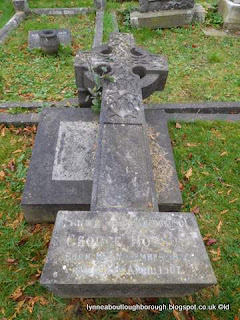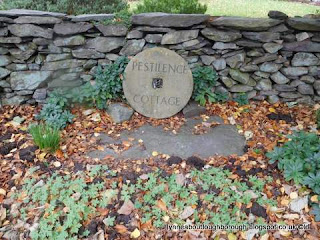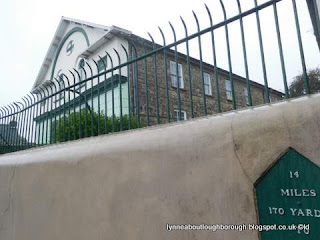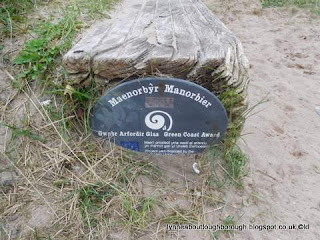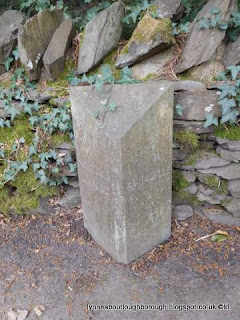The first national outbreak of cholera in the UK was in 1831 and happened in Sunderland, entering the country by ship, a ship that was carrying infected sailors. From there it spread up to Scotland and down to London and claimed around 52,000 lives. I'm not sure if the disease came to Loughborough, but it certainly came to Nottinghamshire and Derbyshire in 1832. A Nottingham surgeon traced the origins of the disease to Bengal, and from there it came to Britain via Iran, Russia, and the northern European countries. Once in the country, he suggested that the disease was carried by boatmen along the Trent to Nottingham.
The people of Loughborough were very aware of the proximity of cholera, and in 1831 created a Board of Health to try and prevent the introduction of the disease to the town, and in the event it did take hold, to limit its spreading.
The Chair of the Board was C.G.Mundy, Esq., and other members were:
C.M. Phillipps, Esq. M.P., The Rev. Mr Holme, Dr Peach, Wm. Middleton, Esq., Wm. Paget, Esq.and Messers: S.Hunt, J.H.Eddowes, Swann (Surgeon); Brewin, Fry, H.Toone, Thomas Craddock, Brock, Mowbray, G.Fowler, W.Dean, W.Henshaw, W.Gamble, John Palmer, and Lee.
The members agreed to report to the Chairman, the state of health of the town and villages that they visited in their professional capacity, if the infectious disease should appear.
A further outbreak of cholera occurred in 1848-9 and the Loughborough Board of Guardians (of the Poor Law) created a committee which comprised a chairman and vice-chairman, and the Guardians for Loughborough and Knightthorpe. This committee was expected to work with the surveyors of the highways to help improve the sanitary conditions of the area. The committee of the Loughborough Dispensary held a special meeting to see what might be done to limit the spread of cholera, leading to subscribers to the Dispensary being able to recommend for treatment anyone affected with a bowel complaint.
On this occasion cholera did reach Loughborough. In 1841 the population of Loughborough was 24,669 and in 1848, 3 people died from the disease. The figures for deaths in 1849 are as follows: 6 (males) 1 (female) died of cholera; 11 (males) 3 (females) died from diarrhoea, making a total of 21 deaths.
The churchyard at the parish church was becoming full, and there was a general concern for hygiene and sanitary conditions in the crowded and overfilled churchyard. Such conditions were particularly a concern for the Rector at the time, Henry Fearon, who campaigned for a fresh water supply for the town, a feat finally accomplished in 1870.
The government also introduced some new Acts, which resulted in Loughborough creating a Burial Board, who oversaw the building of a new cemetery on the outskirts of the town. This Board comprised some familiar names: Edward Chatterton Middleton (son of William mentioned above); Edward Warner; Beauvoir Brock; Henry Toone, Thomas Bennett, Benjamin Gray; George Wragg; Benjamin Baldwin and Robert Lander.
It's been a while since I've had the chance to wander through the cemetery and absorb the names on the memorials, but last week, I managed to do this. Earlier in September, on their health and safety walkthrough, the council had identified a number of memorials deemed to be unsafe and liable to topple, so there were quite a number of these now lying flat. There'd also been a bit of plant clearance too, which meant some graves were more accessible, and others almost hidden by plant debris.
I wasn't looking for anything in particular, but did spot some familiar names - familiar now because of the research I've been doing into the town.
Interestingly, the weekend before I'd been up at St Paul's church in Woodhouse Eaves, looking at the churchyard and the cemetery opposite. IN the latter I spotted some absolutely wonderful plot number markers, and thought it was a lovely idea, and helpful to folk looking for a specific plot.
 |
| Plot marker left of memorial |
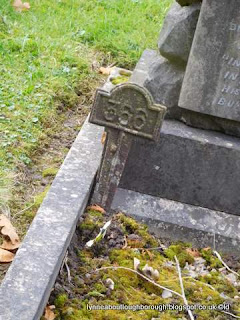 |
| Close up of plot marker |
 |
| Many plotmarkers |
As far as I know there was nothing similar at Loughborough cemetery, although there is a map of the plots at one of the entrances.
 |
| Map of plots at Loughborough cemetery |
 |
| John Jones memorial |
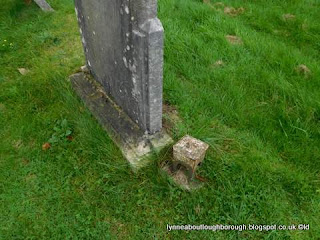 |
| Gravestone and plotmarker |
 |
| Plotmarker |
Hmm, I think that's enough about graves and cemeteries for now! It's almost 31st of October ...
You are welcome to quote passages from any of my posts, with appropriate credit. The correct citation for this looks as follow:
Dyer, Lynne (2017). Cholera and cemeteries. Available from: https://lynneaboutloughborough.blogspot.com/2017/10/cholera-and-cemeteries.html [Accessed 29 October 2017]
Take down policy:
I post no pictures that are not my own, unless I have express permission so to do. All text is my own, and not copied from any other information sources, printed or electronic, unless identified and credited as such. If you find I have posted something in contravention of these statements, or if there are photographs of you which you would prefer not to be here, please contact me at the address listed on the About Me page, and I will remove these.
Thank you for reading this blog.
Lynne
